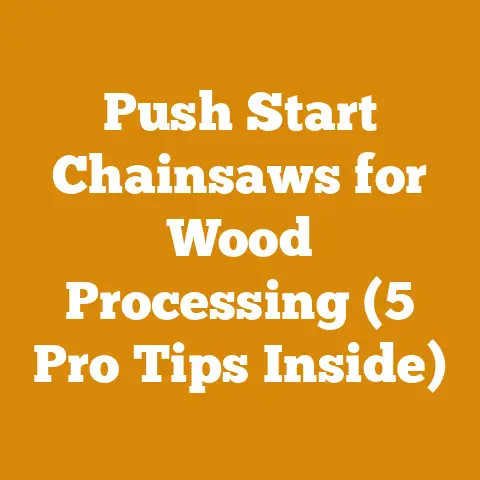Fireplace Insulator Basics for Wood Stove Inserts (Pro Tips)
Before we dive into the nitty-gritty, let’s understand why fireplace insulation is so crucial when using a wood stove insert. Without proper insulation, a significant amount of heat generated by the insert escapes up the chimney or radiates into the surrounding masonry, which, in turn, conducts it to the outside. Think of it like trying to fill a bucket with a hole in the bottom. You’re burning wood, creating heat, but a lot of that heat is just vanishing.
- Heat Loss: A poorly insulated fireplace can lose up to 80% of the heat produced by your wood stove insert. That’s a staggering waste of fuel and money.
- Efficiency: Insulation helps to trap the heat inside the firebox and direct it into the room, increasing the overall efficiency of your heating system.
- Safety: Proper insulation can also help to prevent overheating of the surrounding walls and chimney, reducing the risk of fire.
- Comfort: A well-insulated fireplace provides more consistent and comfortable heating throughout your home.
Types of Fireplace Insulation
Choosing the right type of insulation is paramount. There are several options available, each with its own pros, cons, and price points. I’ve experimented with many over the years, and here’s a breakdown of the most common:
- Size of Fireplace: The larger the fireplace, the more insulation you’ll need, and the higher the cost.
- Type of Insulation: As mentioned above, different types of insulation have different price points.
- DIY vs. Professional Installation: Hiring a professional will add to the cost, but it can ensure the job is done correctly and safely.
- Complexity of Installation: If your fireplace has unusual angles or tight spaces, the installation may be more complex and time-consuming, increasing the labor cost.
- Location: Material and labor costs can vary depending on your location.
Material Costs: A Detailed Breakdown
Let’s break down those material costs with some real-world examples. These prices are based on averages from major retailers and suppliers, but remember, they can fluctuate based on location and availability.
- Ceramic Fiber Blanket: A standard roll of 24″ x 25′ x 1″ ceramic fiber blanket typically costs around $120-$200. This roll should be sufficient for insulating a medium-sized fireplace.
- Mineral Wool Insulation: A package of mineral wool batts (enough to cover approximately 40 square feet) typically costs around $120-$240.
- Refractory Mortar: A 10-pound bucket of refractory mortar typically costs around $15-$30.
- Vermiculite Insulation: A 4 cubic foot bag of vermiculite insulation typically costs around $4-$12.
- Fire Bricks: Individual fire bricks typically cost around $3-$10. For a standard firebox, you might need 20-30 bricks.
Example Scenario: Let’s say you’re insulating a medium-sized fireplace (4′ wide x 3′ high x 2′ deep) using ceramic fiber blanket and refractory mortar.
- Ceramic Fiber Blanket: You’ll need approximately 30 square feet of insulation (allowing for some overlap). At $3 per square foot, that’s $90.
- Refractory Mortar: You’ll need about half a bucket to seal any gaps. That’s about $10.
- Total Material Cost: $90 + $10 = $100
Labor Costs: DIY vs. Professional
This is where things can get tricky. If you’re comfortable with DIY projects, you can save a significant amount of money on labor costs. However, it’s essential to be honest about your skills and abilities. Working with insulation materials can be messy and potentially hazardous if not done correctly.
- DIY: If you choose to DIY, you’ll need to factor in the cost of tools (if you don’t already own them) such as a utility knife, gloves, mask, and safety glasses. These tools might cost around $20-$50.
- Professional Installation: Hiring a professional can cost anywhere from $50 to $150 per hour, depending on the complexity of the job and your location. A typical fireplace insulation project might take 4-8 hours, resulting in a labor cost of $200-$1200.
Example Scenario (Professional Installation): Using the same medium-sized fireplace example, let’s say you hire a professional who charges $75 per hour and estimates the job will take 6 hours.
- Labor Cost: $75/hour x 6 hours = $450
- Total Project Cost (Materials + Labor): $100 + $450 = $550
Additional Costs to Consider
Don’t forget to factor in these potential additional costs:
- Permits: Depending on your location, you may need a permit to install a wood stove insert or modify your fireplace. Permit fees can range from $50 to $200.
- Inspection: After the installation, you may need to have your fireplace inspected to ensure it meets safety codes. Inspection fees can range from $50 to $150.
- Chimney Cleaning: It’s always a good idea to have your chimney cleaned before installing a wood stove insert. Chimney cleaning typically costs around $80-$200.
- Unexpected Repairs: During the insulation process, you may discover hidden problems with your fireplace that need to be addressed. These repairs can add to the overall cost of the project. I once found significant mortar deterioration behind the firebox of an old fireplace. The repairs added an unexpected $300 to the project.
Budgeting for Your Fireplace Insulation Project
Now that you have a good understanding of the cost factors, let’s talk about budgeting. Here’s a step-by-step approach:
- Assess Your Fireplace: Carefully inspect your fireplace to determine the size, condition, and any potential problems.
- Choose Your Insulation: Research different types of insulation and choose the best option for your needs and budget.
- Get Quotes: If you’re planning to hire a professional, get quotes from at least three different contractors.
- Create a Budget: Based on your research and quotes, create a detailed budget that includes all material, labor, permit, inspection, and potential repair costs.
- Add a Contingency: Always add a contingency of 10-15% to your budget to cover unexpected expenses.
Example Budget:
| Item | Estimated Cost |
|---|---|
| Ceramic Fiber Blanket | $90 |
| Refractory Mortar | $10 |
| Labor (Professional) | $450 |
| Permit | $100 |
| Inspection | $75 |
| Contingency (10%) | $72.50 |
| Total Estimated Cost | $797.50 |
Pro Tips for Cost Optimization
Here are some pro tips to help you save money on your fireplace insulation project:
- DIY Where Possible: If you’re comfortable with DIY projects, consider doing some of the work yourself, such as removing old insulation or cleaning the fireplace.
- Shop Around: Compare prices from different retailers and suppliers to find the best deals on insulation materials.
- Buy in Bulk: If you’re doing a large project, consider buying insulation materials in bulk to save money.
- Look for Sales and Discounts: Keep an eye out for sales and discounts on insulation materials at your local hardware store.
- Consider Used Materials: In some cases, you may be able to find used insulation materials in good condition at a lower price.
- Properly Seal Gaps and Cracks: Sealing gaps and cracks with refractory mortar is a cost-effective way to improve insulation and prevent heat loss.
- Maintain Your Chimney: Regularly cleaning and maintaining your chimney will help to prevent problems that could lead to costly repairs.
- Optimize Wood Burning Practices: Using dry, seasoned wood and following proper burning techniques can help to maximize heat output and reduce fuel consumption. I’ve found that letting wood season for at least a year, preferably two, makes a huge difference in burn efficiency.
Understanding Wood as Fuel: A Cost Perspective
The type of wood you burn directly impacts the efficiency of your wood stove insert and, consequently, your heating costs. Different wood species have different heat outputs (measured in BTUs per cord) and burning characteristics.
- Hardwoods vs. Softwoods: Hardwoods (like oak, maple, and ash) are denser than softwoods (like pine, fir, and spruce) and therefore contain more energy. They burn longer and produce more heat. Softwoods burn faster and produce less heat, but they are easier to ignite and can be useful for starting fires.
- Seasoning: Seasoning wood is the process of drying it to reduce its moisture content. Green wood (freshly cut wood) can have a moisture content of 50% or more, while seasoned wood typically has a moisture content of 20% or less. Burning green wood is inefficient because a significant amount of energy is used to evaporate the water, rather than producing heat. It also creates more smoke and creosote, which can increase the risk of chimney fires.
Cost per BTU: To compare the cost-effectiveness of different wood species, you can calculate the cost per BTU. Here’s how:
- Find the BTU content per cord: You can find this information online or in firewood guides. For example, oak typically has around 24 million BTUs per cord, while pine has around 15 million BTUs per cord.
- Find the cost per cord: This will vary depending on your location and supplier.
- Divide the cost per cord by the BTU content per cord: This will give you the cost per BTU.
Example Calculation:
- Oak costs $300 per cord and has 24 million BTUs per cord.
- Pine costs $200 per cord and has 15 million BTUs per cord.
- Cost per BTU for oak: $300 / 24,000,000 = $0.0000125 per BTU
- Cost per BTU for pine: $200 / 15,000,000 = $0.0000133 per BTU
In this example, oak is slightly more cost-effective than pine.
Local Timber Prices: Timber prices fluctuate based on region, species, and demand. Here’s some example data compiled from various sources to illustrate the price differences. Keep in mind, these figures are estimates and can change:
- Northeast US (Mixed Hardwoods): \$250 – \$400 per cord
- Pacific Northwest US (Douglas Fir): \$180 – \$300 per cord
- Central Europe (Beech): €150 – €250 per cubic meter (equivalent to roughly 2.2 cords)
These prices can vary significantly depending on the accessibility of the wood, the quality, and whether you are purchasing it as logs or already split and seasoned.
Calculations and Formulas for Efficiency
Let’s get a little technical and look at some calculations you can use to optimize your wood-burning setup.
Estimating Heat Loss
A simple way to estimate heat loss through your fireplace before insulation is to use a heat loss calculator. There are many free online calculators available. These calculators typically ask for information such as:
- Area of the fireplace opening: The larger the opening, the more heat will be lost.
- Temperature difference between inside and outside: The greater the temperature difference, the more heat will be lost.
- Insulation value (R-value) of the existing fireplace materials: The lower the R-value, the more heat will be lost.
The calculator will then provide an estimate of the heat loss in BTUs per hour.
Calculating Wood Volume
Understanding how to calculate wood volume is crucial for purchasing firewood and estimating your fuel needs.
- Cord: A cord is a standard unit of measurement for firewood. It’s defined as a stack of wood that is 4 feet high, 4 feet wide, and 8 feet long, for a total volume of 128 cubic feet.
- Face Cord: A face cord (also called a rick or stove cord) is a stack of wood that is 4 feet high and 8 feet long, but the depth is less than 4 feet. The volume of a face cord depends on the length of the wood pieces. For example, if the wood pieces are 16 inches long, a face cord would be 1/3 of a cord.
Calculating Volume of Logs: To calculate the volume of a log in board feet, you can use the Doyle Log Scale:
(Small End Diameter (inches) - 4)^2 * Length (feet) / 16This formula provides an estimate of the board feet that can be sawn from the log.
Estimating Drying Time
The drying time for firewood depends on several factors, including the type of wood, the climate, and how the wood is stacked. A general rule of thumb is that hardwoods should be seasoned for at least 6-12 months, while softwoods can be seasoned for 3-6 months.
You can estimate the drying time using the following formula:
Drying Time (months) = K * (Initial Moisture Content - Target Moisture Content)
Where:
Kis a constant that depends on the climate (e.g., 0.2 for dry climates, 0.3 for humid climates)Initial Moisture Contentis the moisture content of the wood when it is freshly cut (e.g., 50%)Target Moisture Contentis the desired moisture content for burning (e.g., 20%)
Example Calculation:
K = 0.3 (humid climate)Initial Moisture Content = 50%Target Moisture Content = 20%Drying Time = 0.3 * (50 - 20) = 9 months
Regulatory Considerations and Safety
Before embarking on your fireplace insulation project, be sure to check your local building codes and regulations. Some jurisdictions require permits for installing wood stove inserts or modifying fireplaces. It’s also essential to follow safety precautions when working with insulation materials and tools.
- Building Codes: Contact your local building department to inquire about any permits or inspections that may be required.
- Safety Precautions: Wear gloves, a mask, and safety glasses when working with insulation materials. Avoid breathing in dust or fibers. Properly dispose of any waste materials.
- Carbon Monoxide Detectors: Install carbon monoxide detectors in your home to protect against carbon monoxide poisoning.
- Chimney Fires: Be aware of the risk of chimney fires and take steps to prevent them, such as regularly cleaning your chimney and burning dry, seasoned wood.
Case Studies and Real-World Examples
Let’s look at some case studies to illustrate the impact of fireplace insulation on heating costs and efficiency.
Case Study 1: The Drafty Fireplace
A homeowner in New England had a large, drafty fireplace that was losing a significant amount of heat. They installed a wood stove insert and insulated around it with ceramic fiber blanket and refractory mortar. They also sealed any gaps and cracks in the fireplace.
- Before Insulation: The homeowner was using 6 cords of wood per winter to heat their home.
- After Insulation: The homeowner reduced their wood consumption to 4 cords per winter, saving them $600 per year (assuming a cost of $300 per cord). They also reported a more comfortable and consistent temperature in their home.
Case Study 2: The Inefficient Firebox
A homeowner in the Pacific Northwest had an old firebox that was not radiating heat efficiently. They lined the firebox with fire bricks and insulated around the wood stove insert with mineral wool insulation.
- Before Insulation: The homeowner was struggling to heat their home with their wood stove insert.
- After Insulation: The homeowner reported a significant improvement in heat output and efficiency. They were able to heat their home more effectively and comfortably.
Actionable Takeaways and Next Steps
Alright, you’ve made it through the gauntlet of information! Here are the key takeaways and actionable steps you can take to improve the efficiency of your fireplace and save money on heating costs:
- Assess your fireplace: Identify any areas where heat is being lost.
- Choose the right insulation: Select the best type of insulation for your needs and budget.
- Create a budget: Plan your project carefully and factor in all costs.
- DIY where possible: Save money by doing some of the work yourself.
- Seal gaps and cracks: Prevent heat loss by sealing any openings.
- Burn dry, seasoned wood: Maximize heat output and reduce creosote buildup.
- Maintain your chimney: Prevent chimney fires and ensure efficient operation.
- Monitor your wood consumption: Track your wood usage to see how your insulation improvements are affecting your heating costs.
- Consult with professionals: If you’re unsure about any aspect of the project, don’t hesitate to consult with a qualified contractor.
Insulating your fireplace is an investment that can pay off in the long run. By following these tips and taking the time to do the job right, you can improve the efficiency of your wood stove insert, save money on heating costs, and enjoy a warmer, more comfortable home. Remember, a well-insulated fireplace isn’t just about saving money; it’s about creating a cozy and inviting space where you can relax and enjoy the warmth of a crackling fire. Now go forth and conquer that fireplace!






